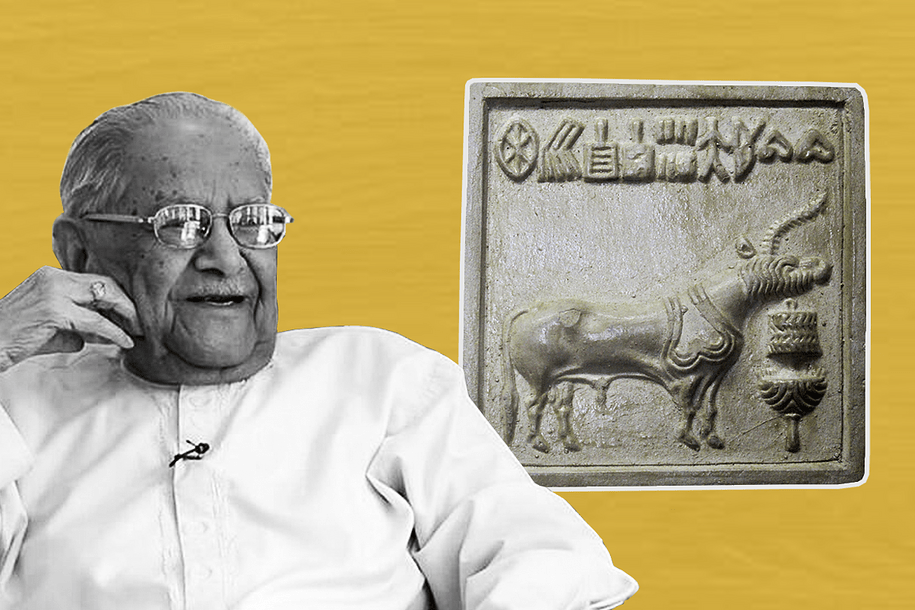About Him
Braj Basi Lal, a centenarian is one of the first-generation archaeologists of Independent India. He was once a household name for leading the excavation of the Shri Ram Janamabhoomi site in Ayodhya in 1976-1977, and for sites accounted for in the Hindu epic Mahabharata. He received the Padma Shri (2000) and well deserved India’s second highest civilian award Padma Vibhushan (2021) as he turns hundred this year.
Born in 1921 at Jhansi, Uttar Pradesh. In 1944, he served as a trainee to British Archaeologist Mortimer Wheeler as he was recommended by his teachers. He was a Master’s degree holder in Sanskrit but became an archeologist due to his inclination towards History. He began his career as an archaeologist from the site of Taxila while assisting Wheeler. He served as director-general at the Archaeological Survey of India between 1968 and 1972. He has also worked at the archaeological sites related to the Hindu epic Mahabharata; Hastinapur and Ayodhya, the ancient Sarasvati Sindhu Civilization (or Indus valley civilization). In 1962, he worked in Nubia and Egypt where he could get data indicating the possibility of cotton domestication in Sudan. He worked as an archaeologist for more than fifty years.
He has worked on over 50 books and 150 research papers. His work also shows the development of Sanskrit and other Indo-Aryan languages.

B.B Lal and Ayodhya verdict
He and his team commenced a project in 1975 titled, ‘Archaeology of the Ramayana sites’, based on it in 1990, Lal wrote of the – “Pillar base theory” based on his excavations. The theory claims to have found temple-like pillars that could have been the foundation of now-demolished Babri Masjid. His theory of the temple-like pillars was recognized as the interpretive framework of the court-appointed excavation team in 2002. He excavated five Ramayana-related sites including, Ayodhya, Bharadwaj Ashram, Nandigram, Chitrakoot, and Shringaverapura.
In 2008 his last book titled-Rama, His Historicity, Mandir and Setu: Evidence of Literature, Archaeology and Other Sciences, he wrote, “attached to the piers of the Babri Masjid, there were twelve stone pillars, which carried not only typical Hindu motifs and moldings but also figures of Hindu deities. It was self-evident that these pillars were not an integral part of the Masjid, but were foreign to it.”.
KK Muhammed and other archaeologists have also corroborated that they found the presence of a temple-like structure below the present-day Babri Masjid.
B.B Lal and Saraswati Sindhu Civilization
He did extensive archaeological work at the Saraswati Sindhu Civilization (Indus Valley or Harappan) site of Kalibangan and for a long time, debates had raged regarding the direction of writing in Harappan seals. Dr. Lal provided a decisive answer to this debate. In an argument, Dr. Lal pointed out, in his paper published in Antiquity in 1966, that the sign on the extreme right was inscribed first and then came the others successively to the left, establishing conclusively the direction of writing in the Harappan script was from right to left. His findings further highlighted that Namaste, Swastika, the game of chess, various yoga asanas, goes back to Saraswati Sindhu Civilization based on various terracotta and bronze statues found at Mohenjo-Daro, Kalibangan, Lothal, and Harappa.
He was fully convinced of the Harappan-Vedic unity and its indigenousness. The Vedic and Saraswati civilizations were synonymous as was the fire ritual which was initially considered as being absent in Harappa and was thought to have been brought by the ‘Aryans’ and many more other rituals.

B.B Lal and Mahabharata
Dr. Lal, as a young archaeologist with the Archaeological Survey of India, wanted to examine whether places mentioned in the Mahabharata had an existence that went back to the times of the epic. It helped that the names of many of these places had remained unchanged from the times of the Mahabharata.
The arguments in favor of the historicity of the Mahabharata are covered in greater detail – “Historicity of the Mahabharata: Evidence of Literature, Art and Archaeology. ”According to the findings of Dr. Lal and his team, the Sanskrit epic Mahabharata could date back to 1500-2000 BCE, instead of 900-1000 BCE as commonly believed. The claim follows the findings at the excavation site of Sanauli, 68 km away from Delhi, including the discovery of a “war chariot” allegedly driven by a horse, a rusted bow and arrow, a burial site and ochre-colored pottery, war shields, whip, torch and an antennae sword with a hilt. This claim is different from others, including S.R. Rao, who posited a date of 1500 BCE for the war, while some have put forward different dates. Perhaps the most famous of those dates is 3102 BCE, which is from the inscription at Aihole.
The Sanauli findings are a missing link with the Rigvedic culture and a sign of our civilizational continuity. Chariots figure prominently in Rigveda, Ramayana, and Mahabharata,”
The findings by Dr. Lal and his team had who carried out excavations at Indraprastha and Hastinapur in 1951-52. Dr. Lal had revealed that around 800 BC a heavy flood in the Ganga had destroyed a considerable portion of the settlement. Based on the relics recovered, he had termed the period Painted Grey Ware (PGW) culture dated to 10th century BC in Gangetic plains, and had said that this was the earliest common pottery connecting all the Mahabharata sites such as Hastinapur, Mathura, Kurukshetra, and Kampilya. The Matsya and Vayu Puranas give us the accounts of the impact the flood and its destruction wrought.
Dr. Lal still continues to work tirelessly, excavating the past and finding answers to the theories explaining Indus Valley Civilization, Mahabharata, Ramayana helping us link the ancient times to contemporary times.
All images belong to their respective owners.

